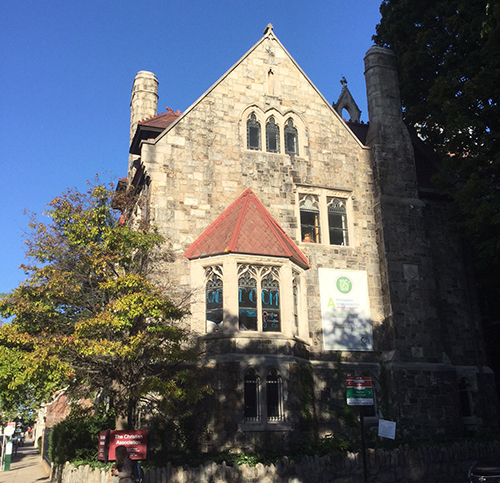Christian Association’s 125th Anniversary: October 29
 On Saturday, October 29, 2016, the Christian Association at the University of Pennsylvania (CA)—the nation’s oldest active ecumenical campus ministry—will celebrate its 125th anniversary with an evening filled with great food, fellowship, special guests, raffle prizes, a silent auction and more. The celebration, which will take place at the University City Sheraton Hotel and begin at 6:30 p.m., will feature a special conversation between the CA’s two honorees, the Rev. Charles L. Howard, University chaplain, and the Rev. William C. Gipson, associate vice provost for equity and access and former University chaplain. They will discuss important issues facing college students, the role of campus ministry, faith life at Penn and their favorite memories from the CA.
On Saturday, October 29, 2016, the Christian Association at the University of Pennsylvania (CA)—the nation’s oldest active ecumenical campus ministry—will celebrate its 125th anniversary with an evening filled with great food, fellowship, special guests, raffle prizes, a silent auction and more. The celebration, which will take place at the University City Sheraton Hotel and begin at 6:30 p.m., will feature a special conversation between the CA’s two honorees, the Rev. Charles L. Howard, University chaplain, and the Rev. William C. Gipson, associate vice provost for equity and access and former University chaplain. They will discuss important issues facing college students, the role of campus ministry, faith life at Penn and their favorite memories from the CA.
Tickets cost $60 each or $500 for a table of 10. Tickets can be purchased online at http://upennca.org/125celebration or via mail. Checks should be made payable to: Christian Association, and sent to 118 S. 37th Street, Philadelphia, PA 19104.
The CA’s long and colorful history has been closely intertwined with the history of the University of Pennsylvania itself. The CA was founded in 1891 as an ecumenical Protestant campus ministry at the University of Pennsylvania (Almanac October 21, 1997). Housing Protestant ministries and encouraging faith development, the CA lived out its mission over the years by advocating for peace and social justice, welcoming immigrants, establishing hospitals in India and China, providing scholarships for students to do social justice and service projects during the summer, opposing war in Vietnam and Iraq, advocating equal rights for women and LGBT people, operating the Green Lane Camps for at-risk Philadelphia children, managing settlement houses for the poor, offering hospitality and dialogue on issues of the day and always providing a community to be safe and to ask questions.
In the early years the CA shared space with the student union in Houston Hall. From 1896 to 1922, the CA took over the student employment agency. In 1928, the CA erected a new building on Penn-owned land, at 3601 Locust Walk with $700,000 raised from students, faculty, alumni and churches in Philadelphia. The building was based on a design by Thomas, Martin and Kirkpatrick, Architects. At this time there were 14 full-time student pastors and directors, several assistants, and many part-time workers at the CA, with a combined annual budget of over $181,000.
In 1999, the CA sold its building to Penn and the building is now known as the ARCH building and houses cultural resource centers (Almanac May 16, 2000). The building is listed in the Philadelphia Register of Historic Places.
In 1997, Penn bought the Westminster House, an outbuilding of the Tabernacle United Church located at 37th and Sansom streets. At the same time, Penn signed a long-term lease on the church basement and the theater, which it renamed the Iron Gate Theater. In 2001, the CA moved into its current home, the Westminster House (Almanac February 20, 2001). The Tabernacle United Church was designed by Theophilus Parsons Chandler and constructed in 1884 at a cost of $206,000.
Today, the Christian Association continues to be a vibrant part of campus life and a “community of hospitality, service and advocacy and faith exploration,” said Rob Gurnee, who has been the executive director of the CA since 2010. More information can be found at www.upennca.org



